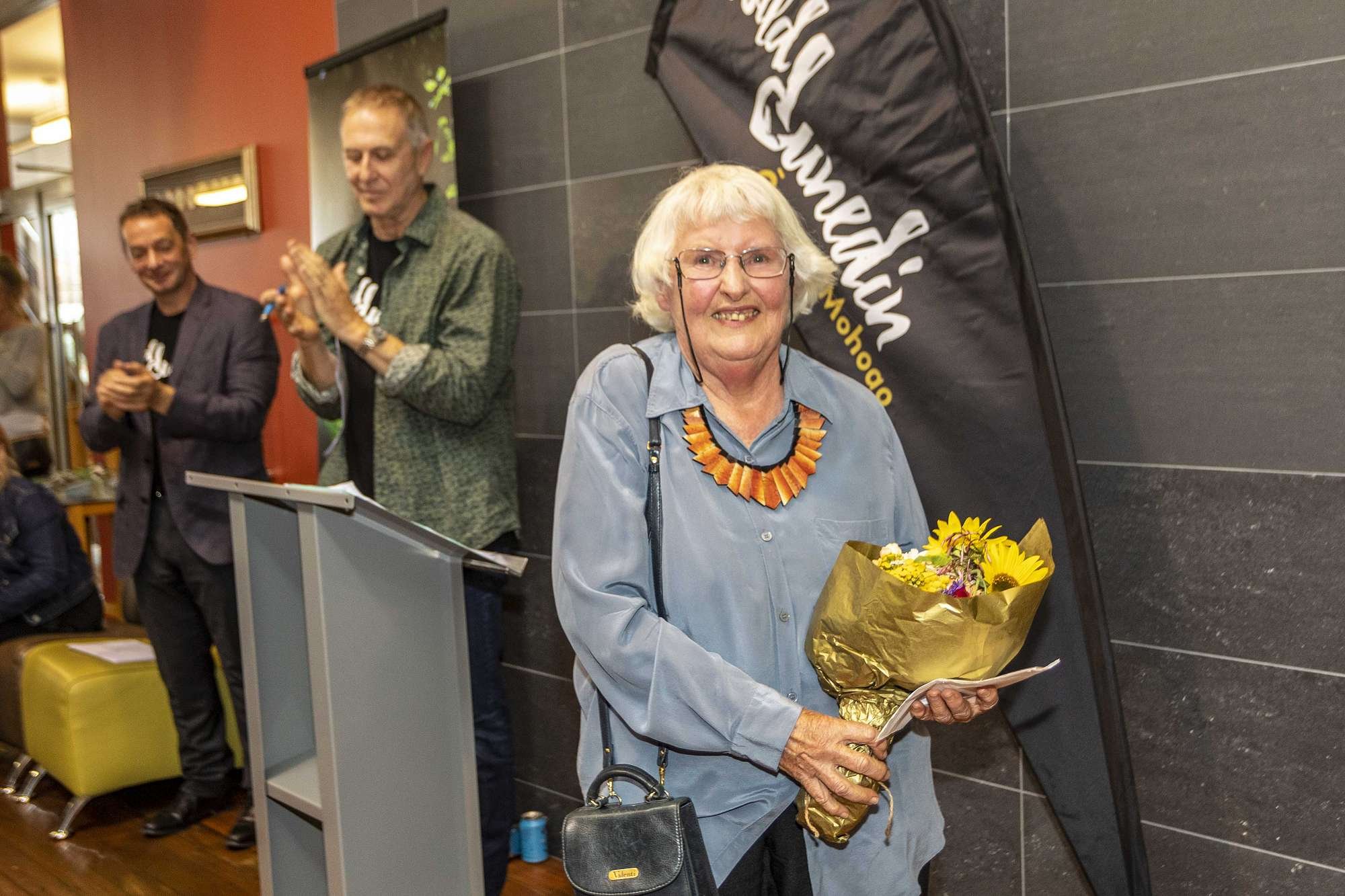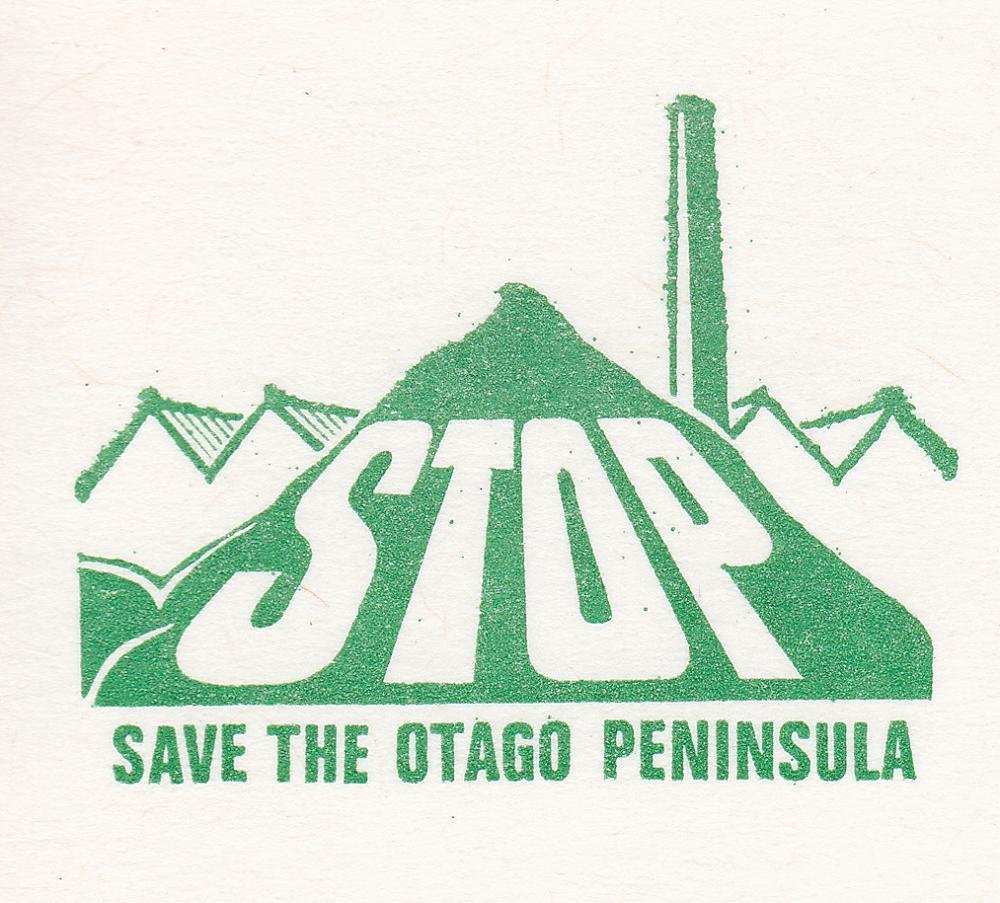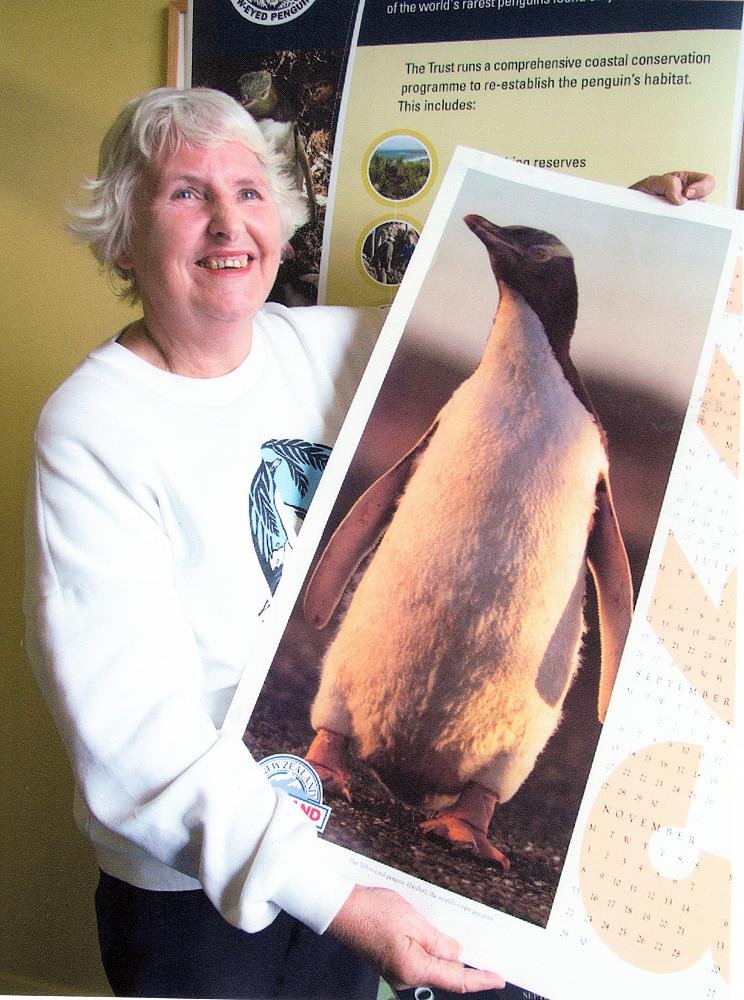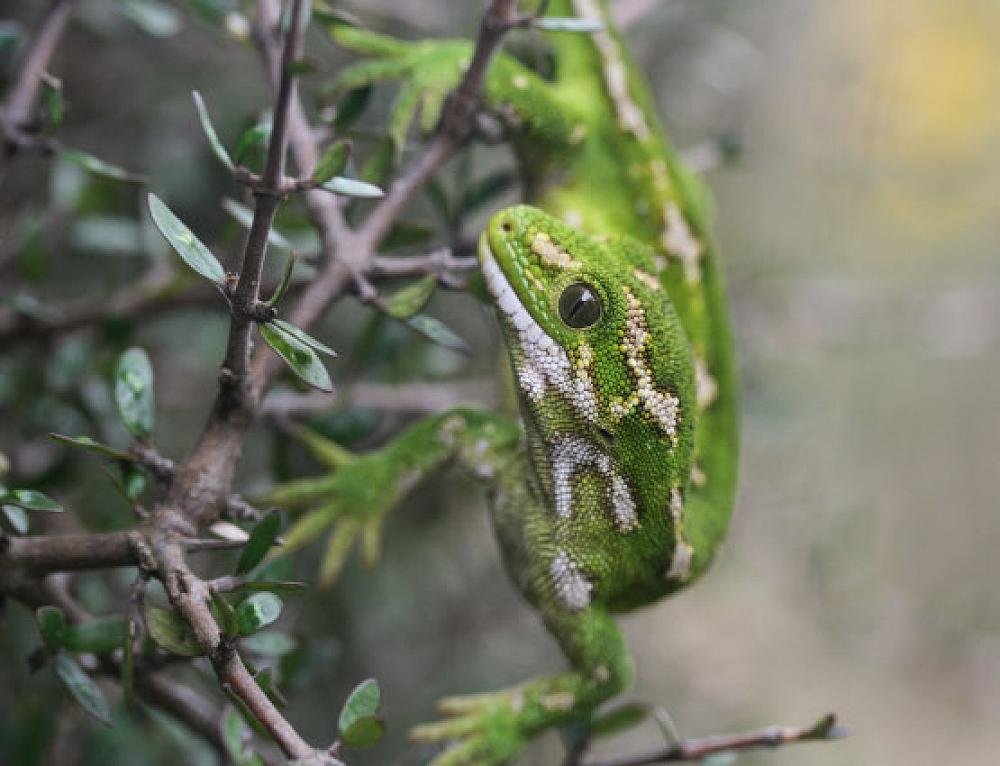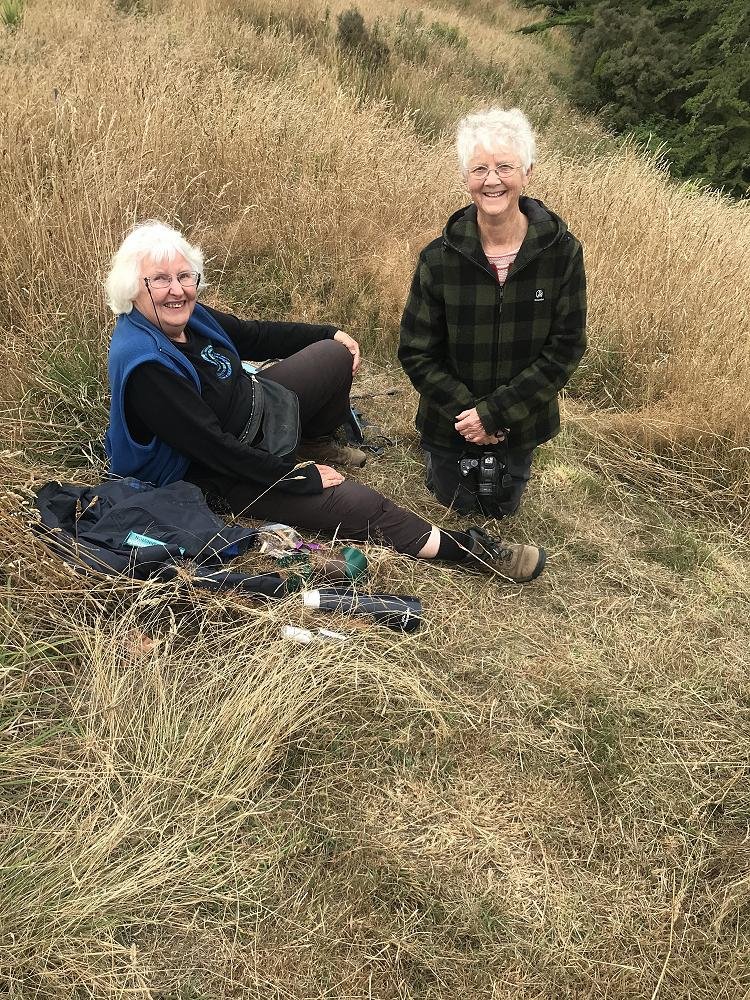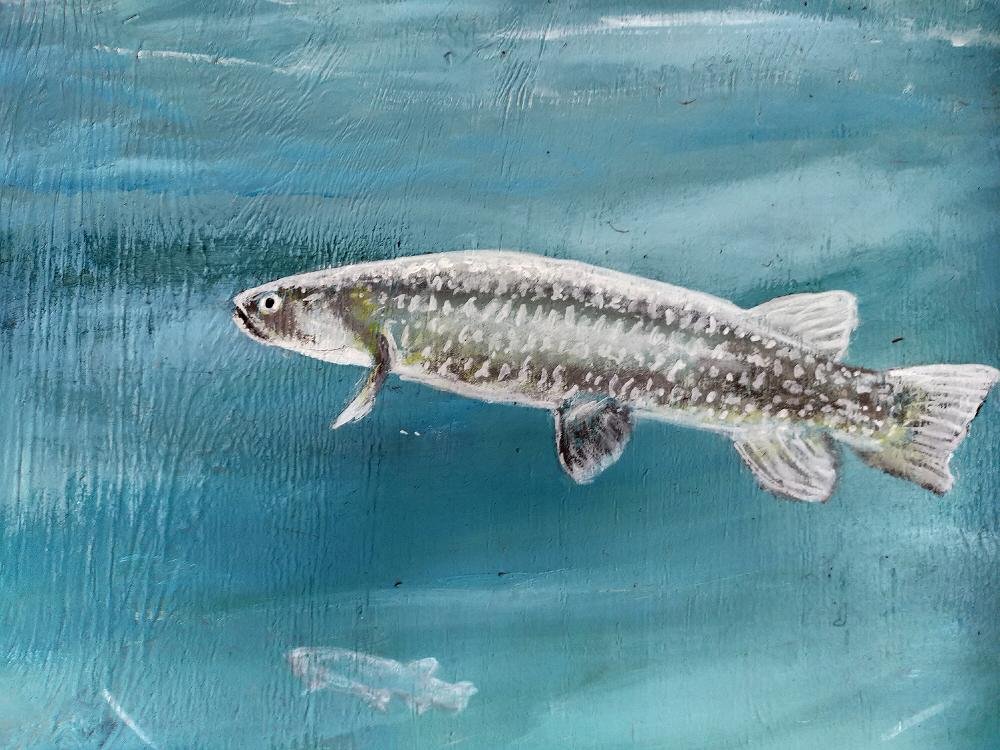Lala Frazer - Wild Hero of Otago Peninsula
Suzanne Middleton, Wild Dunedin — Jun 8, 2021
Wild Dunedin’s Wild Hero 2020 and recipient of a Queens Birthday MNZM honour, Lala Frazer, has been involved in so many environmental campaigns and projects on Otago Peninsula since she moved to Broad Bay 41 years ago that it’s hard to choose the most important.
Lala Frazer, Wild Dunedin’s Wild Hero for 2020. Image by: John Burke
It all started with proposals to build an aluminium smelter on the other side of the harbour at Aramoana, or near Wickliffe Bay on Otago Peninsula. Taking an anti-smelter petition around her neighbours was the first step, then involvement with the formation of the Save The Otago Peninsula group.
With the huge growth of wildlife tourism on the Peninsula, the siting of a smelter anywhere near seems unthinkable now, but it was actually a drop in the price of aluminium that halted the smelter project.
A stunning photo by Caroline Davies from DownInEdin online magazine. Image by: Caroline Davies
The next battle came when a mining company got a licence to prospect for gold around Hereweka/Harbour Cone. STOP’s members became instant experts on gold mining and started asking questions about the negative effects of an open cast mine. When they attempted to explain to the mining company that the area had other values apart from the gold in the ground, the company assured them that the land could be restored to its original profile after mining.
As Lala explains
It turned out that the sample they tested had too little gold for them to mine. Most of the protests I’ve been involved in have stopped because the proposals haven’t been economically feasible. Now one hopes that even though that level of gold is now economic, putting an open cast mine on Otago Peninsula wouldn’t be acceptable, replacing all the revenue from tourism.
STOP considered folding after that, but local botanist Peter Johnson had done a survey on the remnants of native bush on the Peninsula.
Peter made the point that if none of the remnants, secondary bush where birds lived, were fenced, and if they all continued to be grazed, there would be no regeneration. We decided to suggest to the landowners that STOP would fence the bush and we would help them to revegetate and manage the weeds. That’s how the whole rewilding thing came about.
STOP approached landowners and persuaded them to take part, raising the money to pay for the fencing with grants and donations. During the initial rewilding project at the Pyramids they learnt a lot about which species to plant to withstand sandy soil and salt spray, and how best to cage plants to effectively protect them from possums and rabbits. Later projects also included wetlands with their special challenges.
We started a nursery at Glenfalloch, then when we started the Yellow-eyed Penguin Trust they took over the growing, and since then STOP has supported local plant nurseries.
Zoologist John Darby had told STOP members about how over 90% of rare yellow-eyed penguin chicks on the Peninsula were not even making it to sea, due to predation mainly by stoats, ferrets, weasels and cats. They began planting flax to improve the penguins’ habitat at Sandfly Bay, then realised that any planting needed to be protected from farm animals with fences.
A group from STOP formed the Yellow-eyed Penguin Trust which went on to fence off and plant with natives the breeding habitats, and then trap intensively. In some cases, this involved actually buying the land.
Lala in 2008 with Yellow-eyed Penguin Trust posters. Image by: Yellow-Eyed Penguin Trust
In the Yellow-eyed Penguin Trust constitution we were talking about enhancing coastal ecosystems and habitat and the yellow-eyed penguins were a great thing to hang it on, but we were from the first looking at planting also for seabirds, insects and other creatures. It’s always been about a bit more than the penguins.
More was to come.
We were concerned that we were picking up penguins with injuries. We employed Lisa Argilla for two seasons to fix yellow-eyed penguins. Having Lisa in place showed that other animals needed help as well and that led to the current Wildlife Hospital that operates throughout the year.
Otago jewelled gecko - moko kākāriki. Image by: Carey Knox
Otago Peninsula is home to the green jewelled gecko, a threatened species that is vulnerable to introduced predators and poachers. STOP has assisted with managing reserves for the geckos, predator control, and educating landowners about native plants for gecko habitat.
Otago jewelled gecko in kānuka.
Image by: Samuel Purdie
If you grow kānuka, the geckos climb to the top to get the maximum sun. Any poacher would have to cut the tree down. Mice and rats are major reptile predators. We advise farmers who want to keep their geckos and skinks to encourage kānuka because they also shade the ground, and have no grass underneath, thus reducing rodent habitat.
Lala’s friend Moira Parker has been integral to the work of STOP and the Yellow-eyed Penguin Trust. The next challenge was possums and Moira was one of the founding members of the Otago Peninsula Biodiversity Trust which has now nearly eliminated possums on the Peninsula. Moira made sure that the birdlife and plots of native plants were monitored right from the start so that progress could be measured scientifically. Moira’s next target is landscape control of pest plants such as banana passionfruit, Chilean flame creeper and Darwin’s barberry that threaten the biodiversity of the native bush, including the revegetation areas.
Lala Frazer (left) and Moira Parker (right) - two friends and allies through 40 years of conservation mahi on Otago Peninsula.
Lala and Moira’s talent for leading and inspiring the hundreds of volunteers, mainly locals but also many university and school students, who have worked on the planting and weeding over the years, is legendary. But the very intense and detailed work of applying for grants to fund it all, writing submissions, and appearing at hearings and court cases has mainly been Lala’s job, and it’s ongoing.
Looking towards Otago Harbour across the publicity owned Hereweka Harbour Cone property. Image by: Paul Pope
The campaign to persuade the Dunedin City Council to purchase the Hereweka Harbour Cone Block was based on a reluctance to see important landscapes filled with buildings, and also knowledge of the importance of its biodiversity values, which would be threatened. These concerns grew out of all the environmental work described above. The purchase eventually led to the formation of the Hereweka Harbour Cone Management Trust, and Lala was one of its founding trustees.
STOP has taken on responsibility for the revegetation projects. Stewarts Creek which runs down to Hoopers Inlet was the first focus. A corridor of natives was planted between two remnants of bush beside the creek.
Artist Daniel Mead incorporated scenes of native New Zealand fish on the Bacon Street bus stop. These fish are typically found in Smiths Creek which runs along Bacon Street from the Hereweka/Harbour Cone property and into the Otago Harbour. Image by: Suzanne Middleton
The next project, now coordinated by Lala, was the Smiths Creek Catchment, which runs into the harbour. The native fish that breed in the creek and then go to sea, returning as whitebait, need trees for shade and slowing erosion, and a riparian strip to keep out stock and reduce pollution. Lala first got part of the creek fenced in 2013 and enlisted the help of students from Broad Bay School for the initial planting and subsequent monitoring.
Kōwhai are easy to grow and can take as little as two years to develop from seedling to a plant large enough to put in the ground. They can flower within seven years. Easily grown from seed as long as the seed coat is abraded with sandpaper. Image by: John Barkla
When immigrants to Dunedin become New Zealand citizens they are given a kōwhai tree with the option of planting it at Hereweka and getting the GPS coordinates of the tree’s location. Other citizens also mark births and deaths or special occasions by planting commemorative trees that can be visited in the future at Smiths Creek.
So much has been achieved since the aluminium smelter proposal in the 1970s. Many Peninsula landowners are fencing and rewilding their land, native birds are returning, green jewelled geckos can live in safety, and people come from all over the world to enjoy the glorious beaches, vistas and wildlife of Otago Peninsula.
Thank you, Lala, for your tenacity, commitment and mahi.

